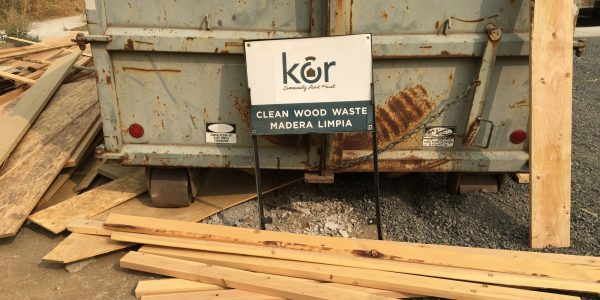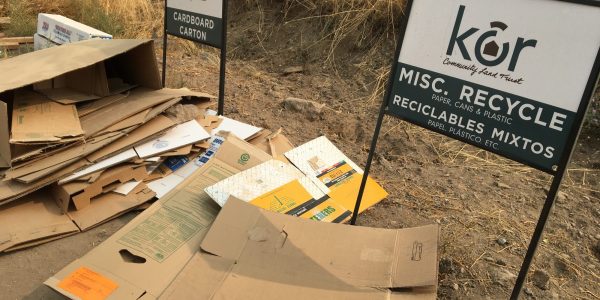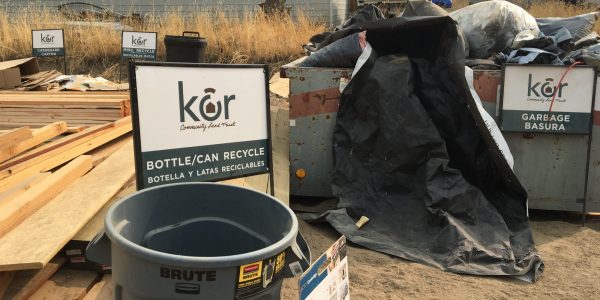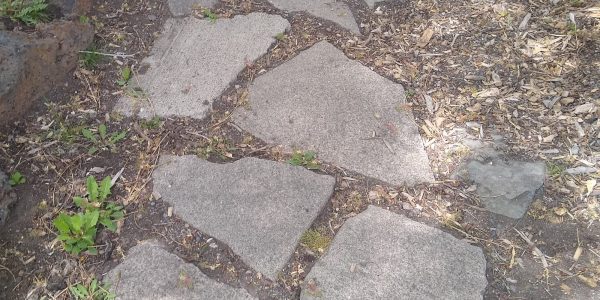5 quick tips: how to reduce waste during construction

The EPA estimates that 548 million tons of construction and demolition (C/D) debris (concrete, asphalt, steel, wood products, drywall, brick and clay tile, etc) was generated in the U.S. in 2015 alone — more than twice the amount of generated municipal solid waste. The reduction, reuse, and recycling of C/D can be accomplished through deconstruction and reclamation. Keeping the materials in the loop is an important part of reducing waste in Deschutes County.
During this year’s Green Tour we had a panel discussion all about rethinking construction waste. We heard from homeowners who salvaged materials, got creative (like stenciling their old tile floors to give them a whole new modern look!), and used great finds from the Restore. We were joined by the Habitat for Humanity Restore too so to learn what types of materials can be salvaged and donated to be reused in the community. On the new construction side, we heard from two builders who are reducing the their waste footprints with panelized designs. Watch the panel here.
Did you know: 25% or more of Deschutes County’s Knott Landfill consists of construction and demolition waste?
This seems daunting, but there are simple ways to reduce this number. Are you thinking about a remodeling or construction project? Here are some ways to rethink construction waste:
Are you remodeling? Take the time to deconstruct.
- Getting rid of old kitchen cabinets? Call the ReStore’s reclamation services. They will remove the old ones out for you and then take the ReStore where someone else can buy them. Keep it in the loop!
- If you’re getting rid of appliances that still work, try to sell them or donate them.
- Gently remove old wood and trim rather than using the sledgehammer. Satisfaction will come from passing materials on and you can go hit the punching bag at the gym to get your energy out!
Set up a recycling station at the construction site.
- Get a good idea of what you will need: what materials on site will be good for donation? What different recycling streams can you contribute to?
- Outline a recycling area on the construction site.
- Obtain containers for each donatable and recyclable.
- Make sure you have clear signs for each area!
- Educate everyone on site so folks know what goes where.
Kor community land trust models this well. Check out their recycling station below. If you want to see it in person, you can sign up for an in-person tour for Saturday, September 26 through our annual Green Tour event!
- Cardboard/Misc Recycling
- Clean Wood Waste — often good for donation
- Bottle/Can Recycling
When designing your new look, take the following into consideration:
- Use non-toxic options like natural flooring and low or no VOC paints.
- Can you find the building material you need at your local ReStore?
- Choose classic designs and finishes that work well over time rather than the trendy new look. (Green shag carpet, anyone?)
Time to paint!?
- Try a sample before you commit.
- Buy only what you need! Try a paint calculator.
- Only need a little paint? Can you find a good color at the ReStore?
- Don’t toss old paint! Recycle it: donate usable paint, all else take it to Knott Landfill for proper disposal.
Get inspired by other people’s reuse ideas:
- Broken pieces of concrete can create a unique and interesting walkway
- ADU porch showcases reclaimed cedar fence made into house siding
- Refreshed old tile with new paint and a stencil. Check out video below to see the whole bathroom.
Check out the Porter bathroom from the 2020 Green Tour! In this segment, Michelle talks about redoing surfaces instead of trashing good materials in order to update a dated space. Watch the whole video here.




